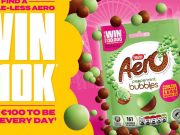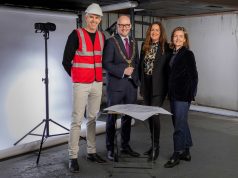
Aleesha Tully and Amy Tumelty of TBWA\Dublin write about the role content creators can play in the communications battle against Covid-19.
With so much discussion about the potential role of the “influencer” in Covid-19 communications this week, it’s important to look at the rationales and evidence supporting this kind of approach.
From the outset, we must clarify not every influencer is cut from the same cloth. In fact, our internal language at TBWA has changed to reflect what we expect from an effective influencer: when we wade into the sea of Instagram, Snapchat and TikTok personalities out there, there’s one key criterion we’re looking for, and that’s that of a “content creator”.
So, what’s a content creator vs. a bog-standard influencer, you might ask? Well a simple way to recognise them is that content creators tend to generate content that is unique and entertaining – applying their creative talents to their channels and becoming micro-producers in their own right.
It’s Not a Case of Why Would You… It’s Why Wouldn’t You?
The nature of Covid-19 communications changes the game significantly and we’d go so far as to say it flips general thinking about content creators on its head. While the likes of an auto or FMCG brand may consider using content creators as an optional extra for their campaign, those who are discounting this particular breed of creators when trying to speak to younger demographics are missing a very obvious opportunity. With Covid-19 being a life or death issue we should be employing every tool in our arsenal to get our vital messages out there.
Why? Hype and hysteria about content creators aside – the priority is to generate buy-in among certain age groups. The most effective sources they can hear messages from isn’t necessarily from an authority figure: it’s from their own peers, in their own spaces and on the media they prefer to consume.
Face Coverings on Public Transport
So rather than staying in the area of theory, we can fill you in on a clear demonstration of this kind of comms campaign in action. In July of this year, we were briefed by the National Transport Authority (NTA) to prepare a campaign which would encourage teenagers (aged 13-17) to wear face coverings when returning to public transport.
With plans for schools and colleges to re-open, our amazing clients in the NTA knew that this cohort should be a key focus and were interested in reaching them in new ways. Through research & social listening, we knew that this particular audience were less likely to adopt this new behaviour for fear of being ridiculed, and that sometimes they could have less knowledge of the benefits of wearing a face covering than more senior generations. We knew that as the fastest growing social media platform for this age category, the growing community of Irish content creators on TikTok was full of untapped potential for conveying our message authentically. Additionally, we understood that a National Transport Authority of Ireland TikTok account wasn’t something our target audience would jump to follow, or be influenced by. So, our task was to partner with the right creators to get the job done.
We briefed Miriam Mullins and Brandon Caulfield, two incredibly creative, funny and seriously entertaining Irish TikTok personalities. The campaign set out to achieve two goals: encourage the use of face coverings on public transport and normalise the wearing of face coverings – especially reinforcing the idea that people are not, well, “weird” for wearing them!
Key to the brief was that our creators freely use their own comedic style, to ensure the messaging was truly authentic to their viewers. Our audience is incredibly discerning: over-scripted content will not work on these channels, which is why our choice of creator is vital. Our creators must believe in the values and principles of what we’re trying to communicate, and we knew that Miriam and Brandon fit these criteria to a tee. This meant that both ourselves and our clients were comfortable giving them a reasonably open brief, with reviews and sign-offs as per any production process. The reach of this social media campaign was outstanding, with over 345,000 views and 88,000 engagements on our creator’s content – the organic reach potential is like no other social platform out there. You can see what they created for yourself – where Miriam explains some hidden benefits of face coverings, while Brandon debunks some mask wearing myths. These two unique pieces of content showcase the difference between the influencer and the content creator: both Miriam and Brandon created content in a style that their followers know and love, providing us with an authentic way of reaching a new audience.
@miriammullins_My mask protects you. Your mask protects me. Please wear one on public transport 😷💕 ##ad ##transportforireland ##fyp ##school ##foryoupage♬ original sound – MiriamMullins_
The Potential of Content Creators Doesn’t Stop There
Content creators on social channels can help us to navigate through our new “Covid” world in more ways than one. Almost every brand manager we’ve spoken to this year has had reservations about the reduced impact of OOH and filling any potential reach gap left by lack of footfall past OOH sites, so it’s been a clear opportunity to lean into additional reach being offered by these growing social platforms.
Earlier this year, we partnered with a pool of Ireland’s micro content creators to produce entertaining content on behalf of SuperValu so that we could reach even more shoppers. Using micro content creators – those with less than 10,000 followers– allowed us to stay true to the brand’s core concept; that SuperValu provide Real Food to Real People. Their content was so entertaining that we even managed to mix up our media and incorporate it directly into a new TVC for the brand. On the lighter side of things, we also partnered with comedian and creator Darren Conway to share his own feelings about 2020 and how everyone deserves to indulge with the new Burger King Click n’ Collect App.
Risk Vs Reward
So, does partnering with a content creator make sense in these Covid times? Absolutely, as long as you take heed of some simple guidelines:
- Some flexibility is required when picking your content creator. Rather than ensuring they’re a squeaky-clean fit for your brand guidelines, consider what’s a good fit for those you’re trying to communicate with – some influencers may be of excellent character while also being fond of colourful language, for example
- Background check as much is as practically possible but accept that there is a light amount of risk involved when partnering with a content creator. On the most part it’s very possible to find creative partners who won’t contravene your values and standards
- Your chosen content creator is popular and influential amongst their viewers for a reason: they’re authentic and consistent in their style – don’t over script or over prescribe. Be clear with them on your goals and objectives, but give a relatively open brief and build in reviews and sign-offs for your own reassurance.
Based on our experience, the reward of partnering with content creators is far far greater than the risk, and you’ll gain a key weapon to help navigate a much-changed communications landscape. The question before key decision makers is not whether they should use these kinds of partnerships: it’s now very firmly in the territory of why wouldn’t they?
At TBWA\Dublin, Aleesha Tully is Strategy Director and Amy Tumelty is Social Media & Content Specialist. Both are part of the extended Social & Content team.





















